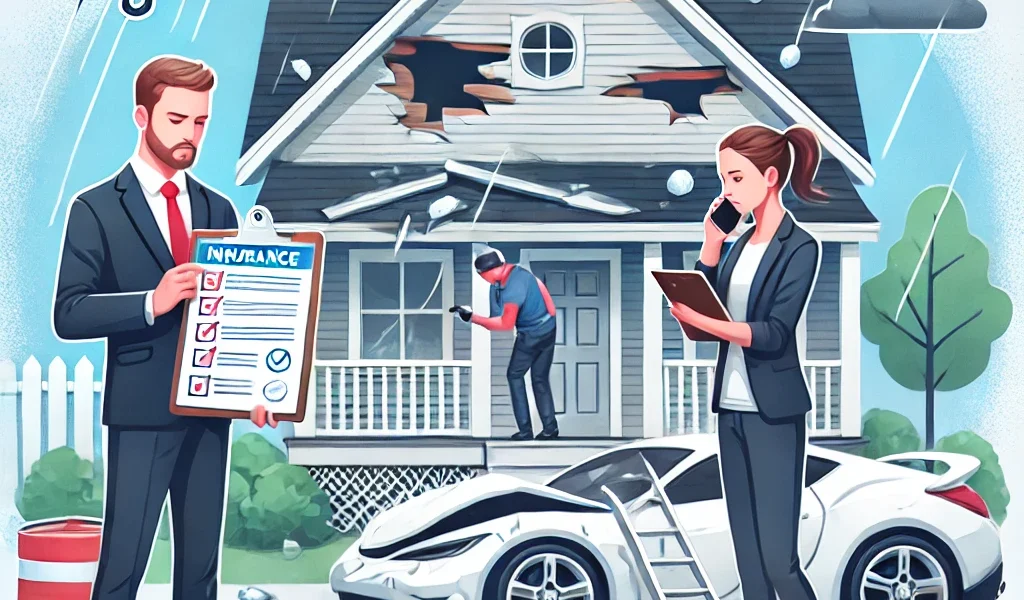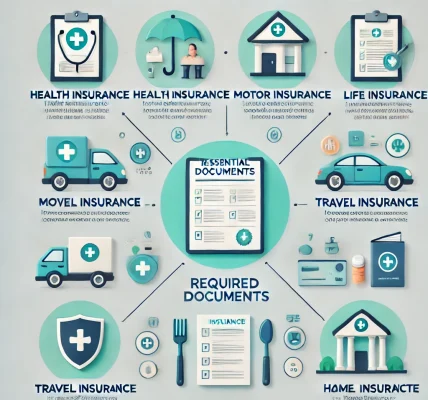Weather-related damages are among the most common reasons for filing insurance claims. From hurricanes and floods to hailstorms and wildfires, natural disasters can cause significant financial losses. Understanding how these damages affect insurance claims and knowing the steps to take can ensure a smoother claims process. This guide will help you navigate insurance claims for weather-related damages effectively while avoiding legal pitfalls.
1. Understanding Weather-Related Insurance Claims
1.1 What Are Weather-Related Damages?
Weather-related damages refer to losses caused by natural disasters and severe weather conditions, including:
- Hurricanes & Storms: High winds, heavy rainfall, and flooding can damage homes and vehicles.
- Floods: Rising water levels can cause structural damage and property loss.
- Hailstorms: Hail can dent vehicles, break windows, and damage roofs.
- Wildfires: Extreme heat can destroy homes, businesses, and landscapes.
- Snow & Ice Damage: Heavy snowfall and freezing temperatures can lead to collapsed roofs, burst pipes, and road accidents.
1.2 Types of Insurance That Cover Weather-Related Damages
- Homeowners Insurance: Covers structural damage caused by storms, hail, and wildfires.
- Flood Insurance: Required for properties in flood-prone areas; standard policies do not cover floods.
- Auto Insurance: Comprehensive coverage protects vehicles from hail, floods, and falling debris.
- Business Insurance: Protects commercial properties from weather-related losses.
2. How Weather-Related Damages Affect Insurance Claims
2.1 Higher Claim Volume Leads to Processing Delays
During major weather events, insurance companies receive thousands of claims, which can slow down processing times.
2.2 Coverage Limitations & Exclusions
- Some policies exclude specific weather events, such as hurricanes or floods, requiring additional coverage.
- Damage due to negligence (e.g., failing to maintain a roof) may not be covered.
2.3 Increased Premiums After a Claim
Filing a weather-related claim may lead to higher insurance premiums, especially in high-risk areas.
2.4 Insurance Adjuster Inspections
Insurers often send adjusters to assess the extent of damage before approving a claim. Proper documentation is essential.
3. Steps to File a Weather-Related Insurance Claim
Step 1: Assess the Damage
- Take photos and videos of all affected areas.
- Make a list of damaged items and their estimated value.
Step 2: Prevent Further Damage
- Make temporary repairs to prevent additional losses (e.g., covering broken windows, removing water).
- Keep receipts for emergency repairs; insurers may reimburse reasonable expenses.
Step 3: Contact Your Insurance Provider
- Report the damage as soon as possible.
- Provide policy details and a description of the loss.
Step 4: Document Everything
- Maintain a file with photos, videos, receipts, and correspondence with your insurer.
Step 5: Cooperate with the Adjuster
- Be present when the insurance adjuster visits your property.
- Provide all necessary documents and answer questions honestly.
Step 6: Review the Settlement Offer
- Ensure the payout covers the cost of repairs or replacement.
- If unsatisfied, negotiate or file an appeal.
4. Common Challenges in Weather-Related Claims & How to Overcome Them
4.1 Claim Denials Due to Policy Exclusions
- Solution: Review your policy carefully before filing a claim. Consider additional coverage if necessary.
4.2 Underpaid Claims
- Solution: Obtain independent repair estimates and negotiate with the insurer if the payout is insufficient.
4.3 Delayed Processing
- Solution: Follow up regularly with your insurer and maintain thorough documentation.
4.4 Disputes Over Damage Cause
- Solution: Provide evidence (weather reports, expert assessments) to prove the damage was weather-related.
5. Tips to Maximize Your Insurance Payout
- Understand Your Policy: Know what is covered and what is excluded.
- Act Quickly: Report claims promptly to avoid delays.
- Provide Detailed Documentation: Photos, videos, and repair estimates strengthen your claim.
- Consult an Expert: A public adjuster can help negotiate a fair settlement.
- Appeal If Necessary: If your claim is denied or underpaid, follow the appeals process.
6. FAQs on Weather-Related Insurance Claims
Q1: Will my insurance cover all types of weather damage?
It depends on your policy. Standard homeowners insurance may not cover floods or earthquakes, which require separate policies.
Q2: How long does it take to process a weather-related claim?
Processing times vary but can take weeks or months during large-scale disasters.
Q3: Can I make temporary repairs before filing a claim?
Yes, but document the damage first. Keep receipts for all repairs.
Q4: What if my insurance company offers a low payout?
You can negotiate by providing independent estimates and evidence of damages.
Q5: How can I reduce my premiums after filing a claim?
Improving home resilience (e.g., storm shutters, reinforced roofing) may qualify you for discounts.
Final Thoughts
Weather-related damages can be overwhelming, but understanding your insurance policy and following the right steps can help you get the compensation you deserve. Stay proactive by reviewing your coverage, maintaining proper documentation, and knowing your rights as a policyholder.




